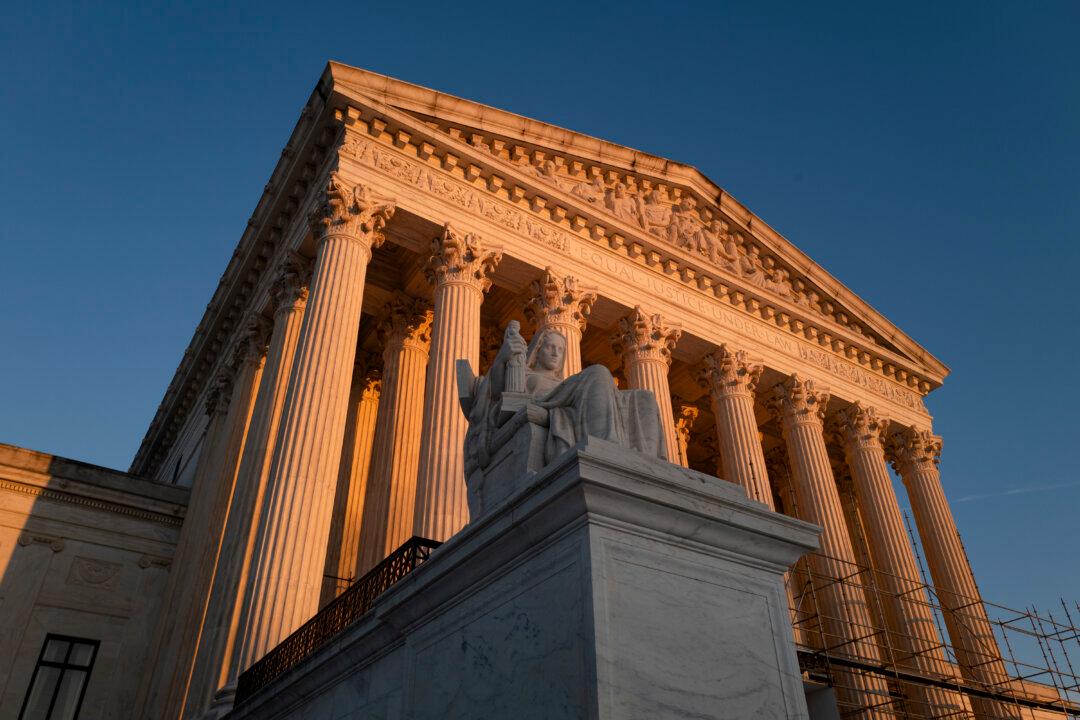Secretary of the Interior David Bernhardt said Aug. 12 the Trump administration is moving forward with a business-friendly regulatory overhaul of the Endangered Species Act (ESA) that officials say “without compromising conservation” will ease some of the burdens landowners and businesses face when operating in areas affected by the almost 46-year-old federal law.
A Supreme Court ruled last year that the federal government overreached when it limited the development of private land in Louisiana to help save a rare frog that doesn’t actually live there. This appears to have set in motion the newly unveiled regulatory changes affecting how the Endangered Species Act will be administered.
One change brought about by the frog case would do away with a more expansive definition of critical habitat used in recent years that refers to areas not currently occupied by the species but deemed to be needed for its recovery.
Another would prevent government officials from treating “threatened” species, which are, as the label implies, in less urgent danger of extinction, the same as endangered species deemed to be in more imminent danger of extinction.
In Weyerhaeuser Co. v. U.S. Fish and Wildlife Service, the Supreme Court ruled unanimously Nov. 27, 2018, that abusive land grabs under the Endangered Species Act will not stand. In the case, lawyers for Seattle-based Weyerhaeuser Co. and landowner Edward Poitevent challenged the government’s critical-habitat designation for the dusky gopher frog, which is found only in Mississippi.
The problem arose when the Interior Department designated land in Louisiana a critical habitat. Agency officials wanted to use existing ephemeral ponds and dig new ones throughout the Deep South to prevent the frog’s extinction. An ephemeral or vernal pond is a seasonal pool of water that supports animal and plant life. The plan was to move some of the frogs to the new ponds and protect the land surrounding them.
Pacific Legal Foundation (PLF), a public interest law firm based in Sacramento, California, represented Poitevent in the court case, and petitioned the government to change how ESA is enforced.
The new regulations constitute “the most ambitious reforms in a generation to the way the Endangered Species Act is implemented,” Jonathan Wood, a senior attorney at the Pacific Legal Foundation, told The Epoch Times.

There are three major rule changes in the reform package, Wood said.
In the 1970s, the Commerce Department—but not the Interior Department—extended the protections provided to endangered species to also protect species merely considered threatened, he said. One of the new rules reverses this policy at Commerce, about which the PLF had filed rulemaking petitions in 2014 and 2015.
The old rule “was illegal and unfair to property owners and undermined incentives to protect species,” Wood said. Currently only 3 percent of species listed as endangered end up being “recovered,” meaning their situation improves enough that they’re removed from the list. So the current system protects species, but doesn’t improve their status, he said.
“This is a clear win for our clients, landowners, and endangered species across the country,” Wood said. “For the first time, we might actually see a rise in the recovery rate of endangered species.”
The second new rule changes the way agencies designate critical habitats for endangered species. Going forward, there will be a presumption that officials have to examine occupied areas before they can begin looking at areas where the species isn’t found, he said.
The third, highly technical, rule change attempts to improve how the agencies work with each other in administering the ESA, he said.
Landowner and business advocates have been receptive to the proposed changes while environmentalist groups say the Trump administration is trying to gut the ESA.
The ESA was signed into law by President Richard Nixon on Dec. 28, 1973, to protect species from extinction as a “consequence of economic growth and development untempered by adequate concern and conservation.”
The statute was created to protect both the species and “the ecosystems on which endangered species and threatened species depend.” In Tennessee Valley Authority v. Hill (1978), the Supreme Court found that “the plain intent of Congress in enacting” the law “was to halt and reverse the trend toward species extinction, whatever the cost.”
At a press briefing this week, Bernhardt unveiled the changes to ESA regulations that he said would increase transparency and effectiveness and modernize enforcement of the law.
“The best way to uphold the Endangered Species Act is to do everything we can to ensure it remains effective in achieving its ultimate goal—recovery of our rarest species. The Act’s effectiveness rests on clear, consistent and efficient implementation,” Bernhardt said.





